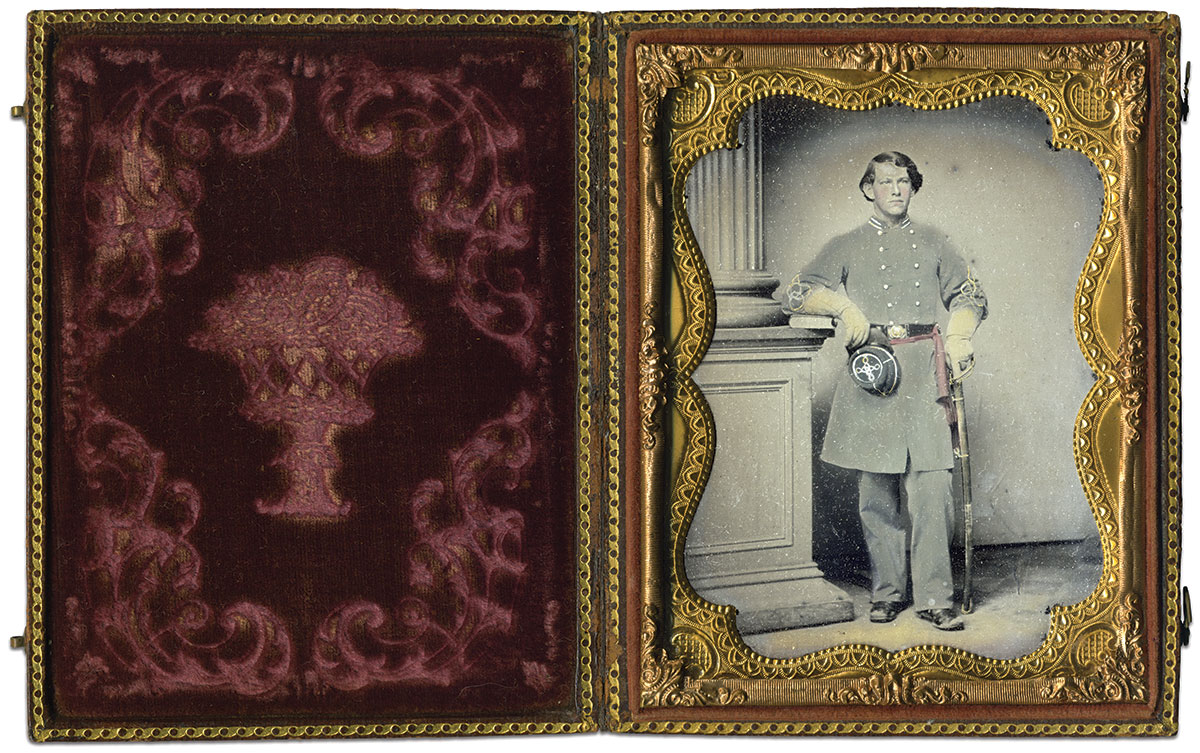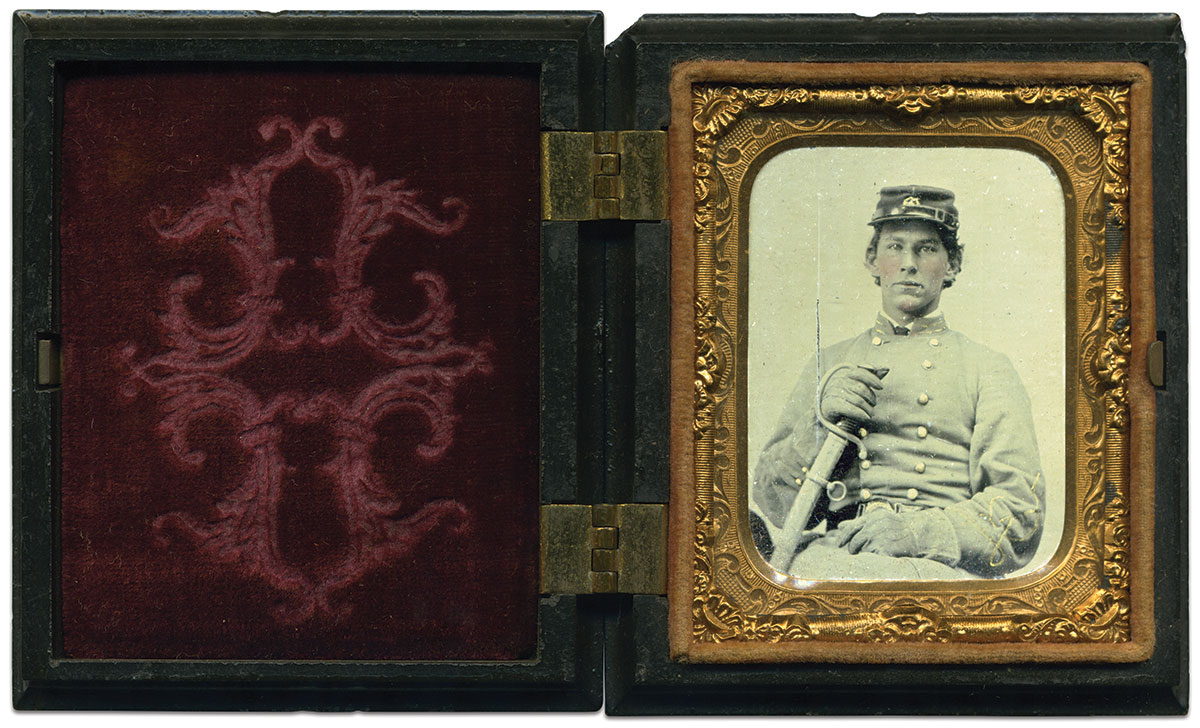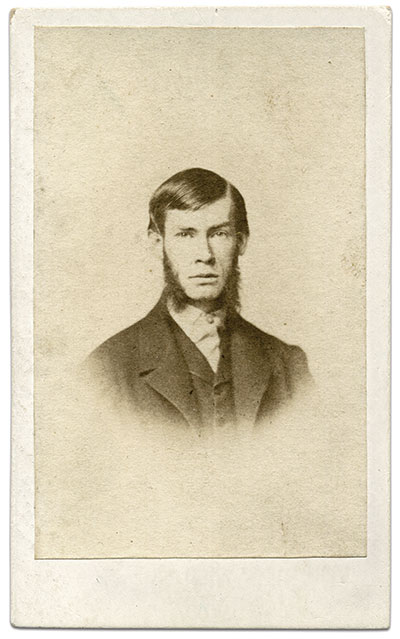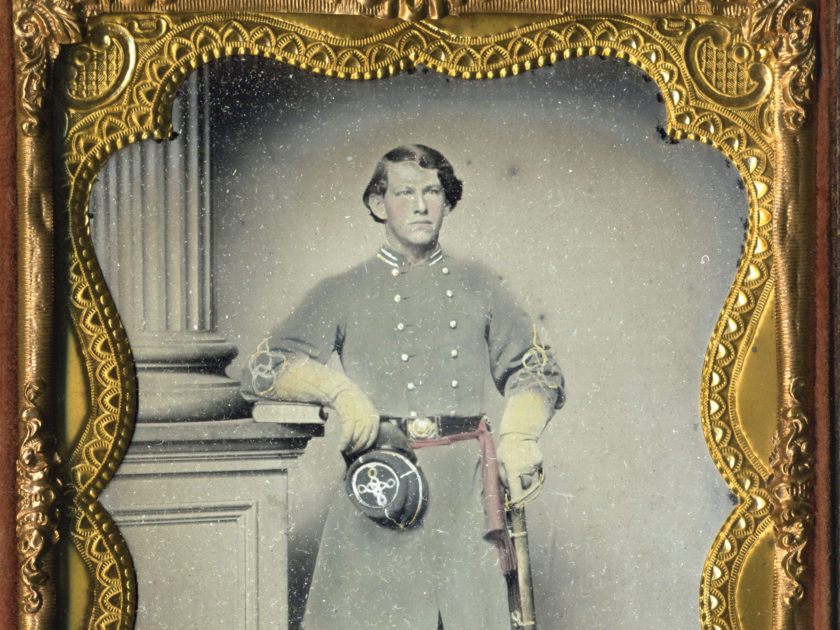By Evan Phifer
As the Army of Northern Virginia threatened Union soil in September 1862, two federal soldiers appeared on the doorstep of Elizabeth Phoebe Key Howard’s home in Baltimore. One of the men said, “Madam, we are enrolling officers and have come to get the names of male members of your family—have you a husband or sons capable of bearing arms?”

She then proceeded to mention the hardships and service of her husband and six sons.
“Charles Howard [her husband], he is a prisoner in Fort Warren … Frank Key Howard, he is also in prison with his father … John Eager Howard, he is a captain in the Confederate Army … Charles Howard [Jr.], he is a major in the Confederate Army … James Howard, he is a lieutenant colonel in the Confederate Army … Edward Lloyd Howard, he is a surgeon in the Confederate Army.” Concerning her youngest son, McHenry, Mrs. Howard boldly declared, “He is also in the Southern Army and with Stonewall Jackson and I expect he will be here soon.” Soon after, the Union soldiers left, leaving a useless federal draft notice underneath the door.
Although McHenry Howard and the Army of Northern Virginia never made it as far as Baltimore, his experience as an infantryman, and later as a staff officer, provided him with a wide variety of perspectives during the four-year conflict. His postwar reminiscences as well as his activity in veterans’ groups helped perpetuate the Confederate memory of the war in the former border state.
Howard was born in Baltimore on Dec. 26, 1838, into one of Maryland’s most prominent families. His maternal grandfather was Francis Scott Key, author of “The Star-Spangled Banner.” His paternal grandfather, John Eager Howard, was a hero of the Revolution.
Prior to the war, Howard belonged to Company C of the Maryland Guard, a distinguished militia organization in Baltimore. Its membership adopted a Zouave-style uniform, then in vogue. This uniform was fashionable, but not practical. Howard recalled in his postwar Recollections of a Maryland Confederate Soldier and Staff Officer Under Johnston, Jackson and Lee that it nearly took “the services of a valet-or a sister or sweetheart” to completely assemble the uniform.

After the outbreak of hostilities in 1861, part of the Maryland Guard and other Southern sympathizing Marylanders crossed the Potomac River and joined the Confederate army. Several in Howard’s group, dressed in their dark uniforms, received a cool reception from a Virginia family that mistook them for federals.
Howard enlisted in the 1st Maryland Infantry and took part in the Battle of First Manassas, and served subsequent picket duty near Falls Church, Va. Years later, he remembered the hilltops where his comrades could see the unfinished Capitol dome in Washington, D.C. and how they contemplated the view “speculating when they would be able to return to their homes beyond it.”
Howard and the 1st spent the late fall of 1861 and winter in Centreville and Manassas, awaiting the approach of the Union army. Back in Maryland, Howard’s father Charles, president of the Baltimore Board of Police, and his brother, Frank Key Howard, editor of the Southern-leaning Daily Exchange, had been arrested in July and September respectively for their pro-Confederate views and actions. Their imprisonment lasted for more than a year, until their release in November 1862.
In late March 1862, newly appointed Brig. Gen. Charles S. Winder, a fellow Marylander, asked then 23-year old Howard to serve as first lieutenant and aide-de-camp on his staff. Howard’s application for a leave of absence from the 1st to join Winder was endorsed by his colonel, Bradley T. Johnson, with the comment that Howard had “since the beginning of the War faithfully done his duty as a soldier and now well deserved this promotion.” Winder, with Howard alongside, was assigned to command the distinguished Stonewall Brigade.
On the battlefield, staff officers often acted on behalf of commanders by carrying messages to and from various officers in the midst of combat and tactical maneuvers. During the Battle of Gaines’ Mill on June 27, 1862, an adrenaline-fueled Howard rode up and asked his former comrades of the 1st if they were to stay in place “like cowards while the Stonewall Brigade is charging past?” Capt. J. Louis Smith, commander of Company F of the 1st, recounted to Howard later how he stopped a soldier who raised his rifle at Howard after hearing his perhaps rash statement. In his postwar memoir, Howard corrected previous accounts of this incident, which he claimed characterized his remarks as too “ceremonious,” given his admittedly emotive state on the Gaines’ Mill battlefield.

Winder was killed in August 1862 at the Battle of Cedar Mountain, part of the Northern Virginia Campaign. Left without a general, Howard attempted to form a company of fellow Marylanders consisting of new recruits entering Virginia from across the Potomac River and former members of the recently disbanded 1st Maryland Infantry. Having learned of the Army of Northern Virginia’s advance into Maryland, however, he gave up organizing a company in Virginia and went off in search of the Confederate army to offer his services with the campaigning army. Finding the army back in Virginia after the Battle of Antietam, Howard joined the Maryland Line, a body of Confederate Marylanders organizing in Winchester, Va., under Brig. Gen. George H. Steuart. Howard served as acting ordnance officer.
That Howard sought out soldiers from his native state is understandable, considering his status as an exile. Maryland staff officer Lt. Randolph McKim recalled Howard’s belief that “a commission as captain of ordnance had no attraction for him if it could separate him from the Maryland Line.”
Despite the impressive combat record of Marylanders who served in the Confederate army, some Southerners, especially those in Richmond, questioned their dedication to the cause. They became increasingly viewed as halfhearted Confederates who either evaded military service or used personal connections to attain preferential positions as staff officers or office clerks in Richmond. Capt. Eugene Blackford, a Virginian serving in an Alabama regiment, wrote in July 1862, “I have been bitterly disappointed in the conduct of the Marylanders I have met in our Army. They are generally volunteers aid[e]s or “hangers on,” a class of persons which is nowhere as conspicuous as in the Army.”

In March 1863, Howard became associated with another Maryland Confederate general when he accepted the position of aide-de-camp on the staff of Maj. Gen. Isaac R. Trimble. Howard did not enjoy the closeness with Trimble that he did with Winder and Steuart, due to circumstances beyond their control. Trimble took months to recover from a wound received at Second Manassas, and Howard fell ill for a time early in the year. During the Gettysburg Campaign, Howard, who had been in Virginia under orders from Trimble to assemble Marylanders for service in the Maryland Line, rode north in hopes of finding Trimble with the Army of Northern Virginia. He eventually made contact with the Confederate army in Maryland during its retreat from Pennsylvania. He learned that Trimble had suffered another serious wound and fallen into enemy hands after the amputation of his left leg.
Writing in his diary after the Confederate defeat at Gettysburg, Howard ruminated that with the end of the summer campaign, the possibility of Maryland’s inclusion in the Confederacy had likely passed, admitting he understood “more than at any time before the probability of our being exiled from it forever.”
In Trimble’s absence, Howard acted as assistant inspector general, and occasionally as assistant adjutant general to Gen. Steuart. He believed Marylanders in the Confederacy “ought to be at the front and not be seen loafing in the rear.” Less than a year later, on May 12, 1864, Howard and Gen. Steuart fell into enemy hands at the Battle of Spotsylvania Court House. After prolonged hardships as a prisoner at Fort Delaware, Howard was paroled in late 1864 and exchanged by early 1865. He spent the last weeks of the war on the staff of Maj. Gen. George Washington Custis Lee, eldest son of the Army of Northern Virginia’s commander. The move allowed Howard to spend time with his brother, Lt. Col. James Howard, who commanded the 18th and 20th Virginia Heavy Artillery Battalions of Lee’s command.
On April 6, 1865, just days before the surrender of the Army of Northern Virginia at Appomattox, Howard was captured at Sailor’s Creek. When a Union soldier asked for his spurs, an indignant Howard questioned if the federal “demanded them as a right.” After being told however, that he would no longer need them and they were wanted as mementos, Howard relinquished the spurs.
Sent to Old Capitol Prison in Washington, D.C., and Johnson’s Island in Ohio, he was released in late May after taking the oath of allegiance. McHenry’s brother, James, who had also been captured at Sailor’s Creek and had passed through the ordeals of Old Capitol and Johnson’s Island with his brother, was also released at this time. After disembarking from Johnson’s Island and before their return home by train to Baltimore, the two brothers, and now former Confederate soldiers, stopped at a hotel restaurant in Sandusky, Ohio, to partake in “the long forgotten taste of regular mint juleps.”

Howard returned to his prewar profession of law. He also served as captain of Company E of the 5th Regiment of the Maryland National Guard. Formed in 1867, its ranks included Marylanders who had formerly donned Confederate grey. Howard was active in organizations such as the Association of the Maryland Line, the Society of the Army and Navy of the Confederate States in the State of Maryland and the Maryland Historical Society.
On May 2, 1903, Howard spoke at the dedication of the Confederate Soldiers and Sailors Monument in Baltimore, evoking the wartime bravery and dedication of the Maryland generals on whose staffs he served. After mentioning Stonewall Jackson’s expressed admiration of Winder and sorrow after his death, Howard proclaimed, “such a tribute to a Maryland soldier will outlive even this work of bronze.” He recounted both Trimble’s capture of Manassas Junction in 1862 and his role during Pickett’s Charge at Gettysburg. He also mentioned the positive influence of Steuart’s appreciation for drill and discipline, which inspired the 1st Maryland Infantry, and, through his influence, instilled itself in other Maryland Confederate units.
In 1914, Howard published his wartime memoirs. The book was reviewed in Confederate Veteran magazine, which acknowledged the unique position of staff officers that “enabled him to understand the movements of the Army of Northern Virginia,” and noted Howard’s memoir as “both interesting and valuable as history.” Veterans that met with Howard were struck by his sharp recollections of the war years. His memoir continues to be used by Civil War scholars.
Howard died at 84 in Oakland, Md., site of the Howard family’s country retreat in Western Maryland, on Sept. 11, 1923. He is buried in Owings Mills, Md. He was survived by his son, Charles McHenry Howard, and three daughters, Elizabeth G., May and Julia McHenry Howard.
References: McHenry Howard, Recollections of a Maryland Confederate Soldier and Staff Officer Under Johnston, Jackson and Lee; Isaac F. Nicholson, “The Maryland Guard Battalion, 1860-1861,” Maryland Historical Magazine 6, no. 2 (1911); Boone Bartholomees Jr., Buff Facings and Gilt Buttons: Staff and Headquarters Operations in the Army of Northern Virginia, 1861-1865; Robert E.L. Krick, Staff Officers in Gray: A Biographical Register of the Staff Officers in the Army of Northern Virginia; Randolph H. McKim, A Soldier’s Recollections: Leaves from the Diary of a Young Confederate; Fred L. Rey, editor, Sharpshooter: The Selected Letters and Papers of Maj. Eugene Blackford, C.S.A. Volume 1; William A. Blair, “Maryland Our Maryland: Or How Lincoln and His Army Helped to Define the Confederacy,” in The Antietam Campaign, ed. Gary Gallagher; J. B. Jones, A Rebel War Clerk’s Diary at the Confederate States Capital Vol. 1; Mark E. Neely Jr., Harold Holzer and Gabor S. Boritt, The Confederate Image: Prints of the Lost Cause, Board of Officers of the Fifth Regiment, Infantry, Maryland National Guard, U.S. Volunteers, Fifth Regiment, Infantry, Maryland National Guard, U.S. Volunteer: A History of the Regiment from its First Organization to the Present Time, Illustrated; Dr. James H. M’Neilly, “Some New Books,” Confederate Veteran 23, no. 4 (April, 1915).
Evan Phifer is a historian in Washington, D.C. A lifelong student of the American Civil War, he received a BA in History from Bucknell University and an MA in History with a concentration in Public History from American University.
SPREAD THE WORD: We encourage you to share this story on social media and elsewhere to educate and raise awareness. If you wish to use any image on this page for another purpose, please request permission.
LEARN MORE about Military Images, America’s only magazine dedicated to showcasing, interpreting and preserving Civil War portrait photography.
VISIT OUR STORE to subscribe, renew a subscription, and more.


1 thought on “Reminiscences of an Exiled Marylander: The life and services of McHenry Howard”
Comments are closed.